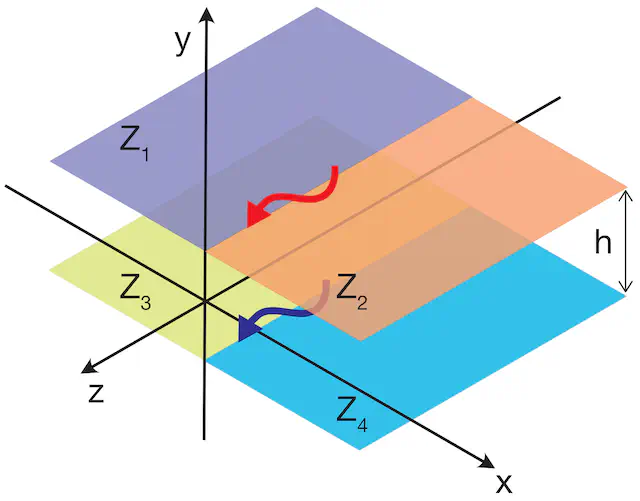
Abstract
We investigate the electromagnetic modes supported by parallel-plate waveguides created by juxtaposing two planar metasurface junctions, focusing on specific parameter ranges where each junction sustains a line wave. We explore how these waves interact as the waveguide thickness changes, considering both purely reactive and non-Hermitian scenarios (incorporating gain/loss). Our findings suggest the potential to achieve tightly confined, quasi-one-dimensional modes, as well as exceptional points and intriguing transitions between waveguiding and radiative regimes. These findings hold promise for applications in fields ranging from nonlinear optics to sensing and imaging.
Type
Publication
MRS Communications 14(6), 1255-1261